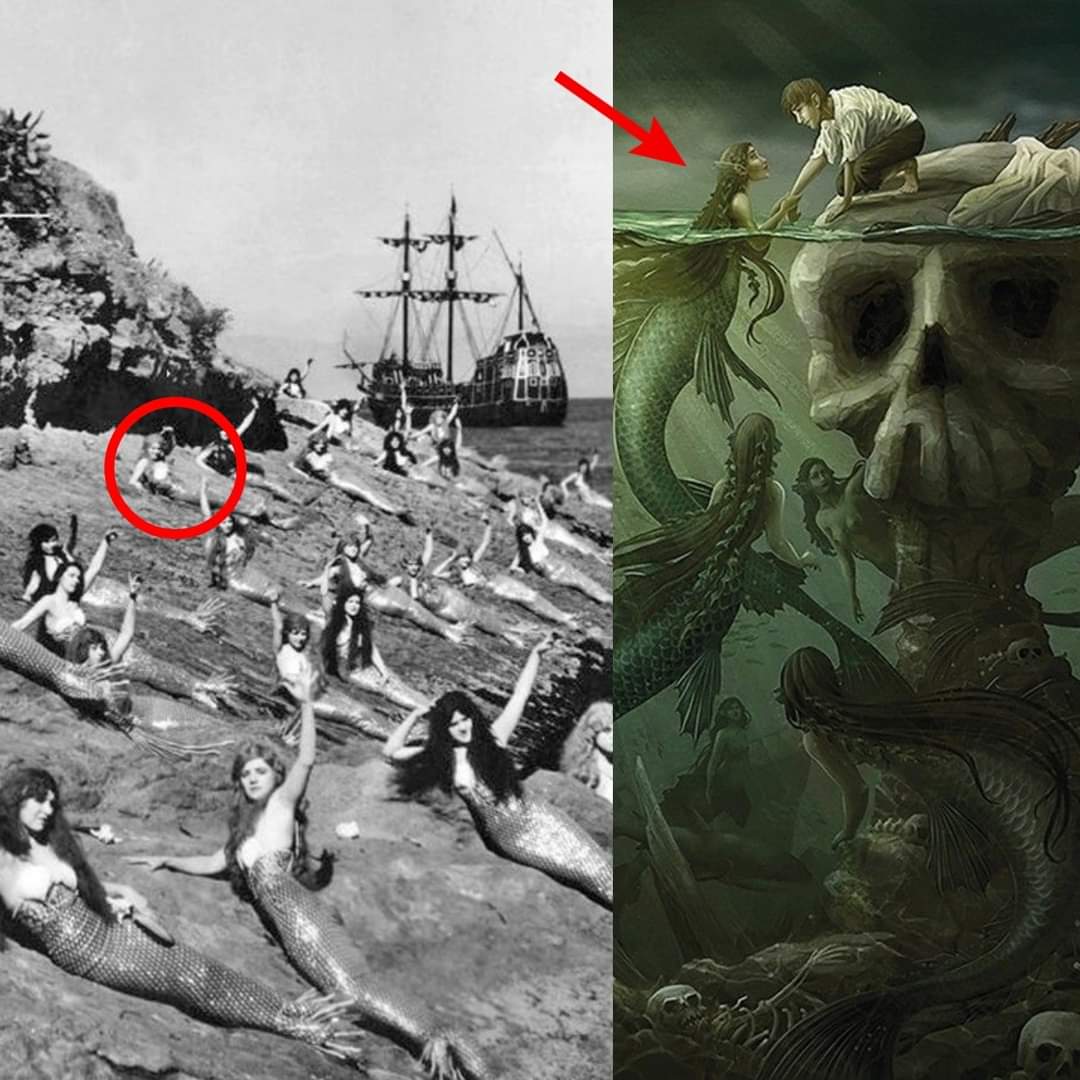Hidden Secrets of the Abyss: The Untold Story of the 19th Century Shipwreck and Its Mysterious Connection to Mermaids
In the murky depths of the Atlantic Ocean, hidden beneath layers of coral and time, lies a wreck that has puzzled archaeologists, historians, and folklore enthusiasts alike. Known as the “Hidden Secrets of the Abyss,” this 19th-century shipwreck off the coast of Ireland has become a focal point of mystery, bringing together historical facts and whispers of ancient legends. Now, through archaeological efforts and advanced underwater technology, the mysteries surrounding this wreck are beginning to unravel, revealing an unexpected link to the enigmatic lore of mermaids.
### The Discovery of the Shipwreck
In 2018, marine archaeologists from the National University of Ireland stumbled upon a previously uncharted shipwreck during an underwater survey for environmental research. The vessel, estimated to have sunk in the early 1800s, was remarkably well-preserved, with intricate carvings and unusual artifacts scattered around it. But as researchers began to explore, they uncovered not only historical treasures but also eerie and inexplicable connections to seafaring legends about mythical creatures—the mermaids.
Artifacts and the Echo of Mermaids
The wreck contained an impressive assortment of personal belongings, from seafarers’ journals to intricate navigation tools. Yet, among these treasures, one item stood out—a sculpture carved into the shape of a mermaid, encrusted with barnacles yet eerily intact. The craftsmanship, intricate and detailed, raised questions about its origin. Was it merely a decorative piece, or did it hold a deeper significance?
Inside a sailor’s journal found aboard, researchers discovered sketches of women with tails swimming beside the ship. Though the drawings might initially appear as mere flights of fancy, further examination revealed references to encounters with strange beings in the water—“sirens” or “mermaids” that allegedly protected the vessel and its crew during violent storms. Could it be that the sailors themselves believed in these mythical beings, or did they encounter something inexplicable that defied rational explanation?
Scientific Explanations and Cultural Interpretations
Archaeologists and historians were cautious, offering rational explanations for these “mermaid” accounts. During the 19th century, sailors commonly mistook manatees or seals for mermaids, especially under the influence of exhaustion or malnutrition. Historical records suggest that sailors often created narratives around such encounters, merging reality with myth as they grappled with the harsh life at sea.
However, this shipwreck seemed different. Unlike typical maritime folk art, the mermaid carvings and journals appeared deliberate, crafted with a level of reverence that implied a profound respect—or fear. Some historians now theorize that these carvings could be linked to Celtic mythology, where mystical sea spirits or “selkies” were believed to aid or harm seafarers depending on how they were treated. This raises an interesting question: was this shipwreck merely an unfortunate accident, or was it the site of a ritual meant to honor or appease such sea spirits?
Mysterious Engravings and Their Symbolism
Further analysis of the ship’s remains revealed engraved runes in a language resembling Old Norse, hinting that the sailors may have been influenced by ancient Viking beliefs. Mermaids and other sea creatures were common in Norse and Celtic mythology, where they symbolized both the beauty and peril of the ocean. The carvings, coupled with fragments of jewelry featuring mermaid-like symbols, suggested a connection between the sailors and these mythical beings that was more than decorative—it was deeply spiritual.
Professor Liam O’Sullivan, lead archaeologist on the expedition, suggests, “These artifacts could indicate that the sailors saw themselves as protected by these creatures. The mermaid figure could represent a kind of guardian or even a religious talisman, meant to secure safe passage. The fact that the ship still lies at the ocean’s floor, however, implies that the sailors may have misjudged their beliefs.”
Exploring the Unanswered Questions
The Hidden Secrets of the Abyss remains an enigmatic site. Many questions linger: Were these sailors truly influenced by encounters with mermaids, or were the carvings part of a maritime tradition that has now been lost to history? And if mermaids are indeed just legends, what inspired such devotion and artistry among these sailors?
This discovery has sparked debate and intrigue among archaeologists, historians, and folklore experts. Some believe that the answer lies not in folklore but in anthropology, pointing to the human need for symbols and stories to understand the natural forces they faced. Others see this as a clue to a more mysterious past, perhaps tied to lost civilizations or ancient beliefs that continue to echo through maritime legend.
Legacy and Cultural Significance
The wreck and its artifacts are set to become the centerpiece of a new museum exhibit, “Mysteries of the Deep: Myth and Reality,” highlighting the ways in which seafarers of past centuries coped with the unknown. For many, the exhibit is more than an exploration of the past—it’s an invitation to wonder about the boundaries of reality and myth.
In the dark, silent depths of the ocean, the Hidden Secrets of the Abyss continues to guard its mysteries. Perhaps, as we unearth more clues from this wreck, we may someday understand the ancient fears, hopes, and beliefs that brought humans face-to-face with the unknown, and led them to carve out mermaids as guardians of the sea.

